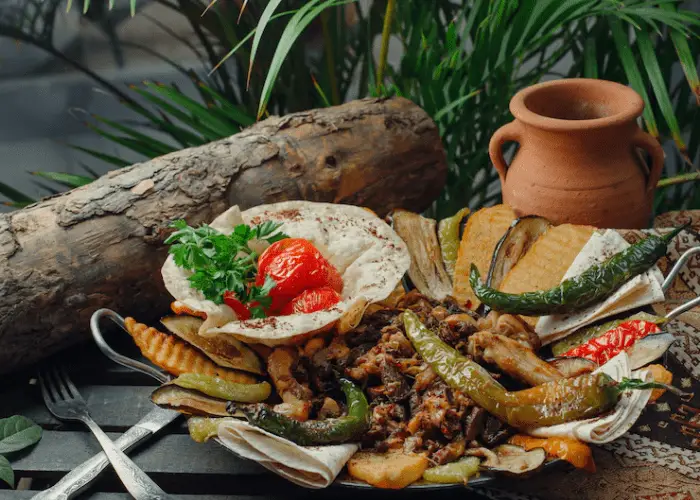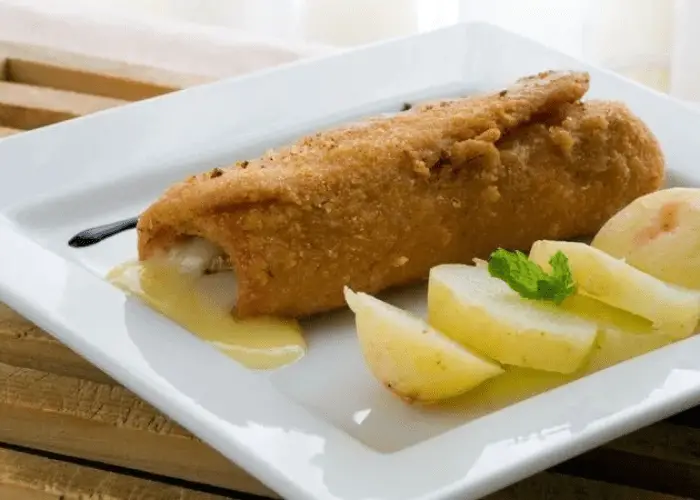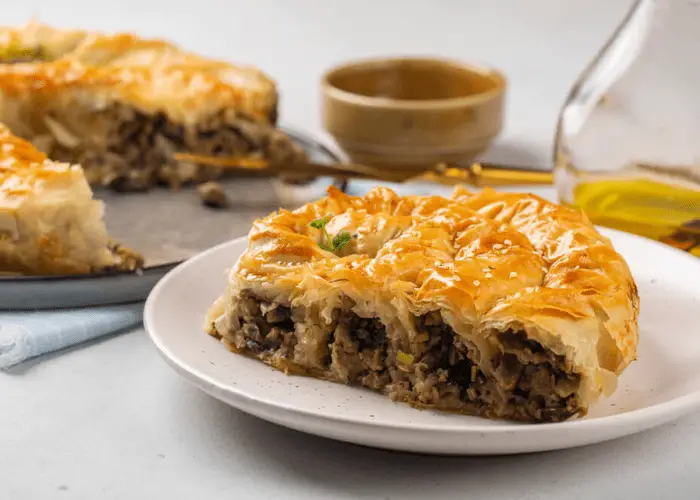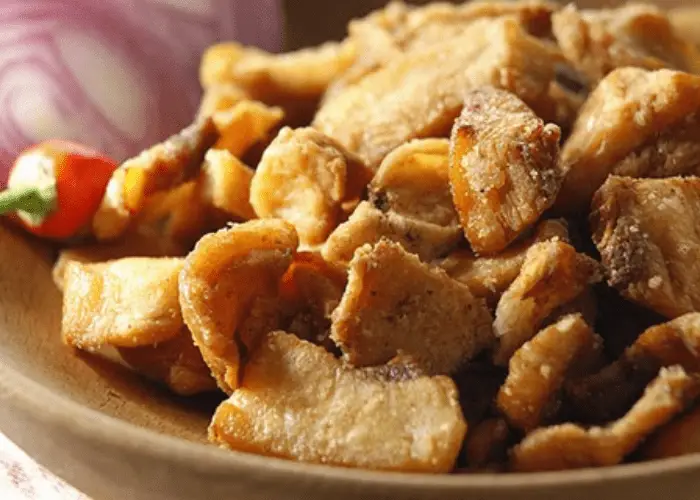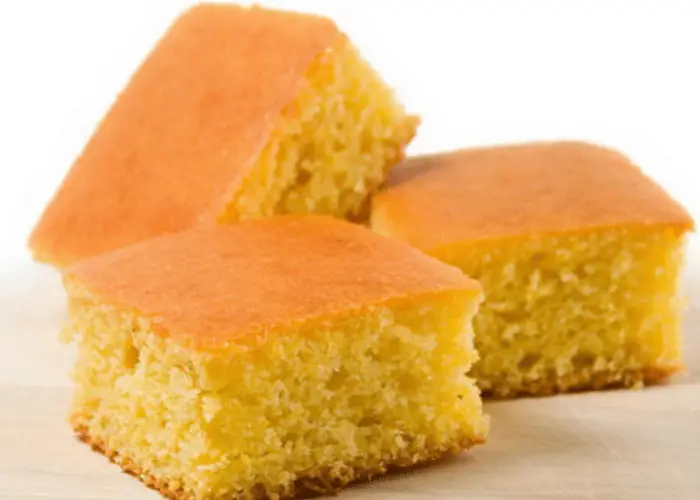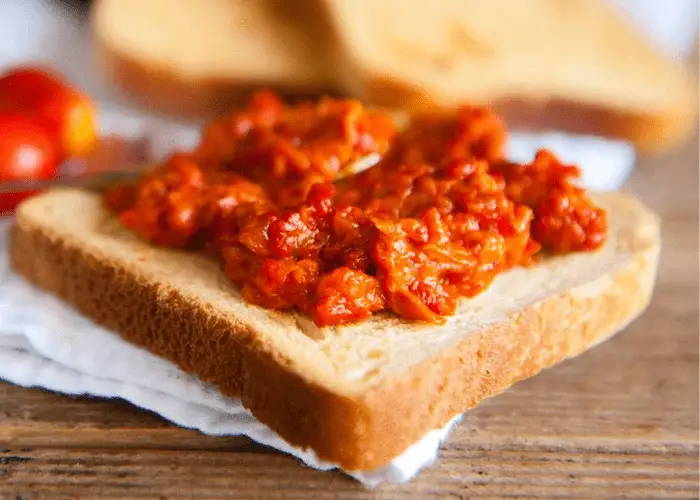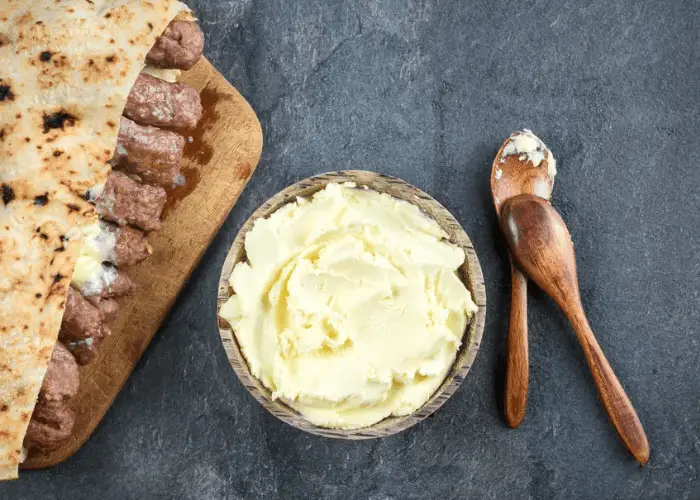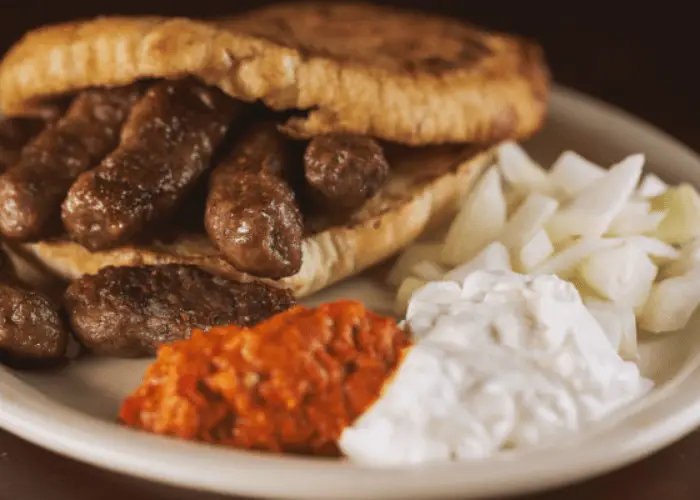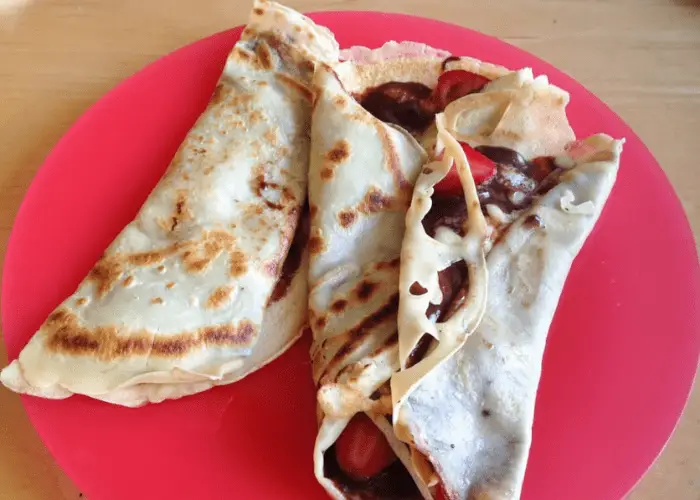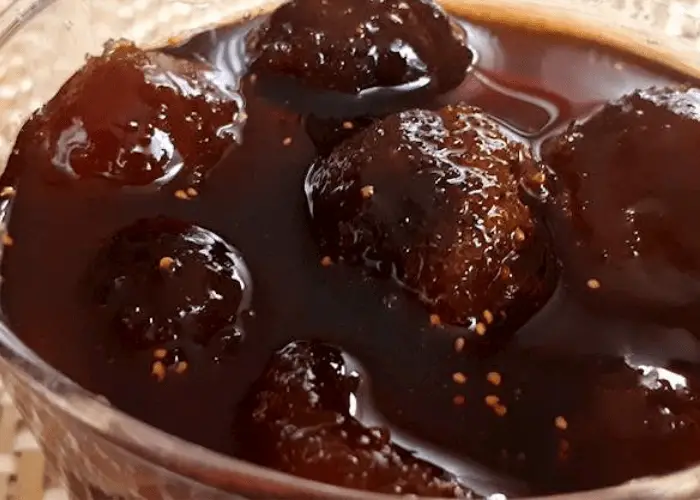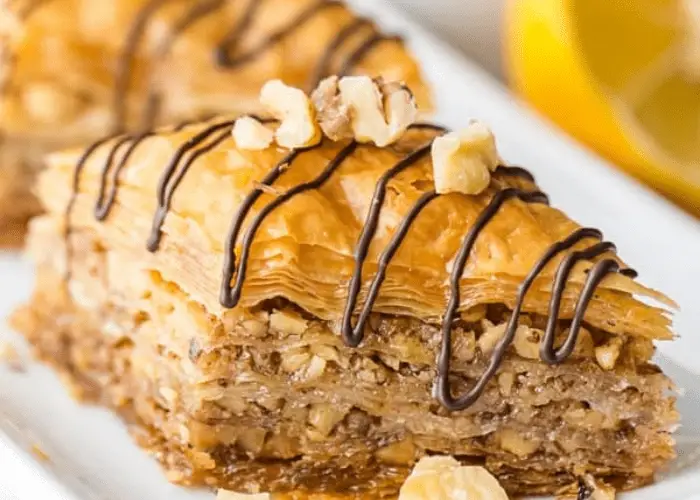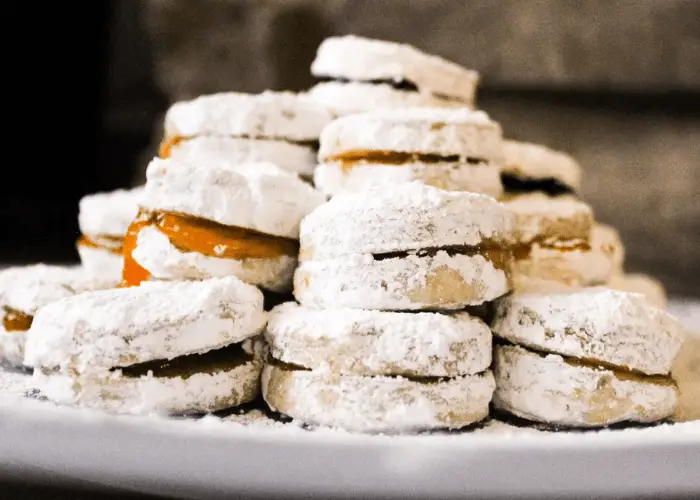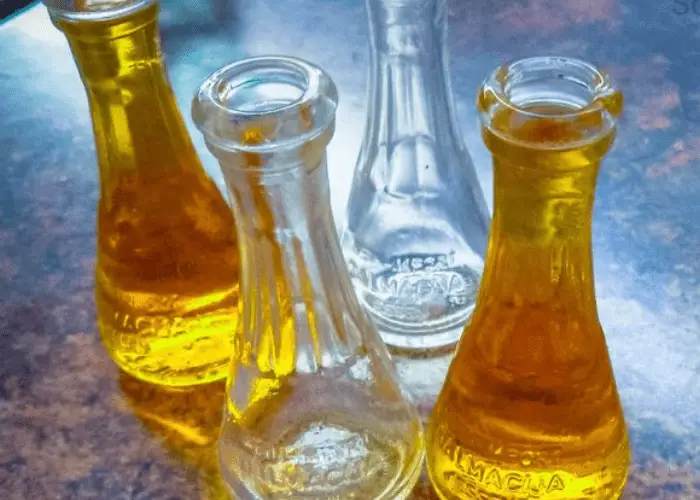Serbia sits in the center of the Balkan peninsula, and over centuries many people crossed and settled here. This contributed to making traditional Serbian cuisine a fusion of tastes and smells.
Serbian people are known for their love of food. One of the conventional phrases you’ll hear is “strength goes in through the mouth,” so food is an important part of everyday life.
Moreover, Serbs love hosting visitors. When visiting a Serbian home, you’ll be offered homecooked meals in large portions.
This country is a paradise for gluttons, especially if you’re a carnivore. Preparing food is one of the greatest joys in life, so it’s no wonder the country has finger-licking dishes ranging from main courses to desserts and homemade drinks to a rich selection of street food.
Here’s our round-up of the best food to try when passing through Serbia, including recipes.
16 Best Serbian Traditional Foods
Appetizers and Main Dishes
1. Sarma
Sarma is the staple of Serbian national food. It’s eaten year-round, but especially during the winter holidays. It has a special place in every Serbian home, and you’ll hear everyone claiming, “my mother makes the best sarma.”
This is a dish of pickled, whole cabbage leaves filled with pork minced meat and rice. The cabbage leaf is filled and rolled in a tightly sealed package. Then, it’s cooked in a pot of hot water and left to simmer for several hours. Dry sausage is often added to the pot to add more flavor to the sauce.
There’s also a vegan alternative to sarma, called posna sarma, which is stuffed with vegetables and rice instead of minced meat.
Sarma has a long history, and it goes way back to the Ottoman empire. Throughout all these centuries, it preserved its #1 spot on the list of Serbian national food.
It’s seen as the ultimate comfort food. Sarma is almost always made in large quantities, and some people will eat it several times a week, with gusto.
2. Prebranac
No one makes prebranac quite like Serbian grandmas. This is a simple dish of baked beans. While baked beans have a bad reputation around the world, Serbs turned them into a delicious dish.
It’s another winter favorite, and it’s a kind of bean soup that can be made bare or with added bacon and grilled sausages.
Prebranac is mostly made with white beans, which are cooked, and then baked with vegetables such as onions and paprika.
It’s suitable for vegans and vegetarians when made without meat. If you’re a vegan visiting Serbia, you’ll love this dish.
3. Karadjordjeva Snicla
You’ve probably heard of schnitzel. Well, this is the Serbian version. The story says a Yugoslav chef was asked to make chicken kiev in the 1950s but didn’t have enough poultry. So, he decided to use veal. In the end, he wasn’t happy with how the dish turned out, so he covered it with tartare sauce. And a new national favorite was created.
Kradjordjeva snicla got its name from the Serbian prince Karadjordje, and it can be made from beef or pork. The meat is rolled and stuffed with kajmak (more on that later). Then it’s coated with flour, dipped into beaten eggs, rolled in bread crumbs, and fried.
The final result is a deep brown color and a crispy exterior. It’s often served with tartar sauce. It’s one of the most popular Serbian national dishes, as each bite is a crunch of breaded cutlet with creamy kajmak.
If you like hearty meat-based dishes, you’ll love this one.
4. Gibanica
Gibanica is a cheese pie. It can be eaten as a snack, for breakfast, lunch, basically any time of day (or night). Gibanica doesn’t last long in a Serbian home because it’s usually eaten in a flash, no matter if it’s hot or cold.
This is one of the most typical dishes in Serbia, and it can be found in almost every bakery shop. It’s sold and eaten in slices.
It’s made using thin layers of dough, commonly found in every supermarket. The dough is filled with cheese, eggs, yogurt, and oil.
What makes gibanica stand out is the decadent cheese filling. This is soft cow milk cheese, typical for Serbia. If you want to eat it Serbian style, have yogurt with a slice of gibanica.
Gibanica taste is out of this world. When fresh out of the oven, there’s a dough and cheese scent in the air, and it tastes crispy and delicious.
Gibanica also comes in other variations, such as meat and spinach, but cheese is the most common and traditional one.
5. Burek
Another popular dish you can buy in every bakery is burek. It’s so popular that there are special burek stores called Burekdzinice, which only sell different kinds of burek.
It’s also a controversial topic and inspo for countless Instagram memes because there’s a never-ending debate between Serbs if burek should only be made with meat or also cheese. One side claims burek is meat only, and if there’s cheese, it’s a cheese pie (see gibanica above).
It traces its origins to the Ottoman empire, and it’s made of thin flaky dough, which is filled with minced meat.
This is a rich pastry dish, and it also comes in modern variations, such as a sweet cherry burek, or filled with pizza toppings, such as ham cheese and tomato sauce.
Compared to gibanica, which can be eaten cold, burek should be eaten heated with yogurt.
It’s most commonly eaten by children on lunch break at school, or in the early morning hours, after a night out, as it’s believed to cure a bad hangover.
6. Cvarci
Cvarci plural, or cvarak singular, resembles pork fat crisps. We promise it tastes better than it sounds, especially if you’re a meat-lover.
The bacon has been cut into thick chunks, then fried in its fat in a pan. Once it’s been cooked, you get crispy and salty pork rinds. It can be eaten on its own or with other foods. It can also be used as a filling in various pastries or a salad topping.
If you’re offered cvarci in Serbia, definitely give them a try. There’s nothing like them anywhere else. They are always homemade and organic.
7. Proja
Proja is a traditional Serbian food made of cornbread. It was at the height of popularity before the 1950s during widespread poverty because it’s made only with a couple of ingredients: corn flour, oil, salt, water, and baking powder.
Nowadays, the simple flavor is enhanced by adding cvarci, kajmak, and other ingredients. It’s usually eaten as an appetizer or a snack, often cold.
Spreads
8. Ajvar
Ajvar is perhaps Serbia’s most traditional food, referred to as vegetable caviar. It’s a red bell pepper spread that’s eaten as a side dish or an appetizer for any meal. It’s full of nutrients, and the best ajvar is homemade. You’ll find at least several jars in every Serbian home. Many families, especially in the countryside, make multiple jars and store and eat ajvar throughout winter.
It can be mild or spicy if made with chiles. It’s savory and made of roasted red paprika, olive oil, and salt. Eggplant can be added for a richer taste.
In Serbia, ajvar is eaten with everything. Spread on a crusty slice of bread, with prosciutto, barbeque, and any other food.
You can find ajvar on starter menus in restaurants, or supermarkets but nothing quite compares to the homemade one.
9. Kajmak
Another traditional side dish is kajmak. However, where ajvar is made from vegetables, kajmak is made from milk. It resembles cheese, but it’s not the same thing.
It’s made by simmering cow milk that’s unpasteurized and unhomogenized for several hours. The cream will collect on the surface of the milk, which is scooped up. Once cooled, it forms into kajmak. Young kajmak will have a mild flavor and be soft, but if left for several days, it’ll become harder and have a stronger flavor. In this case, it’s referred to as old kajmak.
It’s high in fat and has a deep rich taste. Similarly to ajvar, it’s eaten with anything, most commonly as accompaniment for grilled meats, such as burgers and cevapi.
Street Food
10. Pljeskavica
Pljeskavica is also known as a Serbian hamburger. Compared to the Western burger, it’s bigger, and not to be subjective, it’s much better.
What makes Serbian hamburgers stand out is the meat quality, usually a mixture of pork and beef. It’s grilled and spiced and served in a somun or lepinja, which are a kind of flatbread. You can put any toppings you want in the lepinja, but the most common ones are mayo, ketchup, kajmak, onions, and tomatoes.
If you’re feeling particularly hungry, you can order punjena pljeskavica, where the meat is stuffed with cheese.
National favorite is Leskovačka pljeskavica, a pljeskavica originating from a city called Leskovac. It’s made of beef or pork, and it’s very spicy.
11. Ćevapi
By now, you’ve probably realized how meat-centric Serbian cuisine is. At the heart of their love for meat are cevapi. This is arguably the most popular barbecue meat in Serbia.
Cevapi are made with a mix of pork and beef minced meat. This is sausage-style finger food that’s grilled and served in a lepinja, same as a pljeskavica. Kajmak and chopped onions go really well with cevapi, as the sweetness of kajmak pairs well with the smokiness of the meat.
12. Palacinke
Palacinke, or pancakes, are among the most popular Serbian street foods. You’ll find them in every fast food shop.
They aren’t like American pancakes but are more similar to crepes, as they are thin. They are made using flour, eggs, milk, sparkling water, and a pinch of salt.
Palacinke come in both sweet and savory versions, and there’s no end to the fillings you can choose in Serbian fast food shops.
Some favorite savory pancakes include cheese, ham, smoked ham, and even breaded pancakes baked in the oven.
The most popular sweet pancakes are Nutella and banana combo.
Desserts
13. Slatko
Slatko, translated to sweet, is a fruit preserve. As the name says, it’s really sweet, and you’ll need a glass of water after it. In fact, guests are traditionally greeted with slatko and a glass of water when coming to a Serbian home.
Slatko is homemade, and it can be made with any kind of fruit. Most popular include strawberries, white cherries, raspberries, plums, even rose petals.
In slatko, you’ll find whole pieces of fruit doused in thick, sugary syrup. It’s served in small glass bowls, and it’s usually eaten with one or two spoonfuls, as more than that tends to be too sweet.
14. Baklava
Baklava is another food left from the time the Ottoman Empire ruled Serbia. Although centuries have passed, this is still one of the most popular and traditional Serbian desserts. It’s commonly made around the holiday period.
Traditional Serbian baklava is a richly sweet dish, made with thin filo pastry layered with walnuts and topped with a sherbet made of sugar and water syrup, with a couple of slices of lemon placed on top. Baklava isn’t a dry dessert, but a flaky pastry with a nutty filling.
While traditional baklava is made with nuts, more modern versions include different kinds of fruit and even poppy seeds.
15. Vanilice
If you have a sweet tooth, you’ll love vanilice. The main flavor of these walnut and vanilla cookies is vanilla.
Vanilice are made with lard, sugar, flour, eggs, lemon, and walnuts. All of these ingredients are smushed together, cut into circles, and baked. Then the two halves are connected with a dollop of raspberry jam, and powdered sugar is sprinkled on top.
Vanilice are bite-sized treats that are a common delicacy in Serbian homes in winter times, and especially during the holidays, but you can find them in restaurants and bakeries too.
They are traditionally made one to two days before they should be eaten because after this time, the moisture from the jam softens the crispy cookie, and it melts in your mouth.
Drinks
16. Rakija
Rakija is Serbia’s national drink. It’s best compared to a strong brandy. It’s a rich, sweet, and strong alcoholic drink that will leave all of your senses tingling and your throat burning.
Rakija is drunk on special occasions, and it’s often homemade. It’s a special gift, as rakija is expensive. Rakija makers give the drink to friends and family. The drink’s origin is very important. The closer you are to the manufacturer, the better.
This drink is made by distilling fermented fruit. It has a clear color, like water, and a high alcohol content — ranging from 35% to 65%. If you have more than one or two shots, there’s a high chance you’ll feel a buzz.
Rakia is served in rakija glasses — a miniature wine glass or a kind of a beaker, 30 to 50 ml. It’s drunk without ice or any garnishes.
The drink comes in different versions, depending on the fruit used. Most common is šljivovica made from plums, kajsijevača made from apricot, dunjevača made from quince, viljamovka made from pear, and loza made from grapes.
List of Most Well Known Serbian Recipes
If you’re in the mood for some cooking, here’s how to make a traditional Serbian meal.
Gibanica Recipe
Ingredients:
- 500 g filo pastry
- 500 g cheese
- 1/2 cup of oil
- 3-5 eggs
- 1 cup yogurt
- 1 cup sparkling water
- 1 teaspoon salt
Instructions:
- Heat the oven to 200 C, and line a baking tray with parchment paper.
- Prepare the stuffing. Slightly whip eggs, then add yogurt, water, oil, and salt.
- Spread one dough sheet and cover it with the filling. Place the next sheet on top, and repeat everything until the whole filo pastry package is spent.
- Roll the pastry and make ten cuts with a knife. The width between the cuts should be two fingers. Cut into slices and put into the baking sheet, so the side with the cheese goes down. Place all 10 pieces next to each other in two lines in a square baking tray, or go in circles in a round one.
- Pour the remaining oil on top.
- Bake for about 40 minutes or until the dough turns golden brown.
- Serve while hot.
Sarma Recipe
Ingredients:
- 2 medium-sized sauerkraut heads
- 1 kg mixed minced meat
- 1 cup rice
- 2 cloves of onion
- 1 clove garlic
- 150 g of smoked sausage and dried pork ribs
- Half a teaspoon spicy paprika powder
- One teaspoon sweet paprika powder
- Salt and pepper according to taste
Instructions:
- Saute diced onion, then add finely chopped garlic and saute a little more.
- Add finely chopped bacon and fry a little.
- Add the washed rice, mix with the onion, then remove from the ringlet.
- Add minced meat and spices. Mix well.
- Cut the thickened parts of the sauerkraut, i.e., root leaves.
- Boil the sauerkraut leaves briefly.
- Lay a cabbage leaf on your hand, so the root of the leaf comes to the root of the hand.
- Place a spoonful of minced meat on a sauerkraut leaf and fold the leaf so a tightly sealed package forms.
- Place sauerkraut leaves on the bottom of the pot, then fold the folded sarma and put smoked sausage and dried pork ribs in between.
- Once you’ve folded all sauerkraut leaves, cover the pot with sauerkraut leaves, pour water, and add a bay leaf.
- Cover the pot and place it in a preheated oven.
- Simmer at 190 C for about 4 hours.
Karadjordjeva Snicla Recipe
Ingredients for four people:
- 800 g of pork or veal filet
- 90 g of seasoned kajmak
- 30 g flour
- 2 eggs
- 150 g bread crumbs
- 1/2 l oil
- A pinch of salt
Instructions:
- Wash, then slice the filet so that you get a sizable steak.
- Pound the meat until it is thin and soft on both sides. One edge should be thicker for easier rolling into a cylinder shape.
- Spread kajmak along the thicker edge and roll the meat into a cylinder shape.
- Cover the stuffed meat with flour
- Dip the meat into the beaten egg, so it’s covered on all sides, then dip in the bread crumbs.
- Roll the meat.
- Fry in hot oil until breadcrumbs turn golden yellow.
Vanilice Recipe
Ingredients:
- 500 g flour
- 200 g lard
- 1 egg
- 1 egg yolk
- 5 tablespoons sugar
- 1 lemon juice
- 1 lemon peel
- 250g powdered sugar
- 250g jam (traditionally uses apricot)
- 2 small bags of powdered vanilla sugar
Instructions:
- Mix lard and sugar, then add yogurt, eggs, and lemon.
- Slowly add flour until there’s a smooth dough.
- Dust the workspace with flour and then spread the dough until it is 5 mm thick.
- Using a small glass or a bottle cap, stamp out the cookies so they are round and bite-sized.
- Place the cut dough in a tray covered with baking sheets.
- Preheat the oven to 150 degrees and bake for about 15 minutes.
- Leave to cool. After they are cooled, take one cookie at a time, put a dollop of jam, and then top with another cookie.
- Roll the connected cookies in vanilla sugar.
Serbian Traditional Food — a Foodie’s Paradise
Serbia is a treasure trove for foodies or people who like hearty local cuisine. It has Greek, Turkish, and Balkan influences mixed together for an enjoyable dining experience.
You’ll find plenty of dairy and meat dishes, such as delicious cow milk and goat cheeses, and layers of meat between thick pastries, as well as an abundance of grilled meat.
Round up the Serbian meal with a traditional dessert such as baklava and vanilice, and wash it all down with a glass of rakija, and you’ll be full hours after eating.
In Serbia, food is more than sustenance. It’s about love and family, and it shows the rich history of the people. It’s food that can’t be compared to anything else, so try to make it by yourself, or come to Serbia and get ready for a spectacular dining experience.

